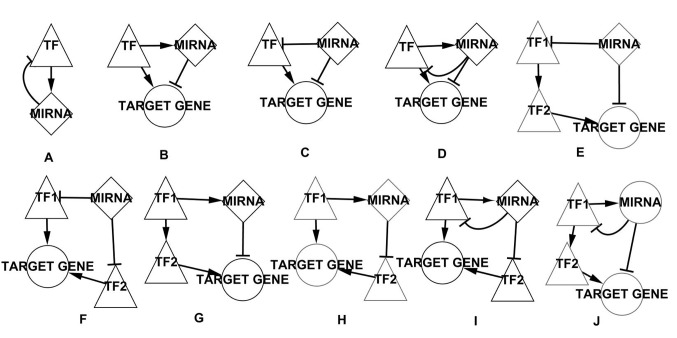Figure 3.
A number of network motifs in the BL-associated network. (A) The FBL motif. (B) The TF-regulated FFL motif. (C) The miRNA-regulated FFL motif. (D) The composite FFL motif. (E) The 4-nodes miRNA-regulated motif that miRNA and TF together regulate a target gene, for example miR-17, TCF3, GLI1 and CCND2 form this type of motif. (F) The 4-nodes miRNA-regulated motif that two TFs together regulate a target gene, for example miR-20, TP53, E2F1 and SMO form this type of motif. (G) The 4-nodes TF-regulated motif that miRNA and TF together regulate a target gene, for example miR-155, TP53, NFATC2 and ICAM1 form this type of motif. (H) The 4-nodes TF-regulated motif that two TFs together regulate a target gene, for example miR-155, TP53, BCL6 and BCL2L1 form this type of motif. (I) The 4-nodes composite motif that two TFs together regulate a target gene, for example miR-17, E2F1, RBL2 and POU2F2 form this type of motif. (J) The 4-nodes composite motif that miRNA and TF together regulate a target gene, for example let-7a, E2F1, RBL2 and CCND2 form this type of motif. Triangles represent TFs, diamonds represent miRNAs, circles represent target genes. FBL, feed-back loop; FFL, feed-forward loop; miRNA, microRNA; BL, Burkitt lymphoma; TF, transcription factor.

